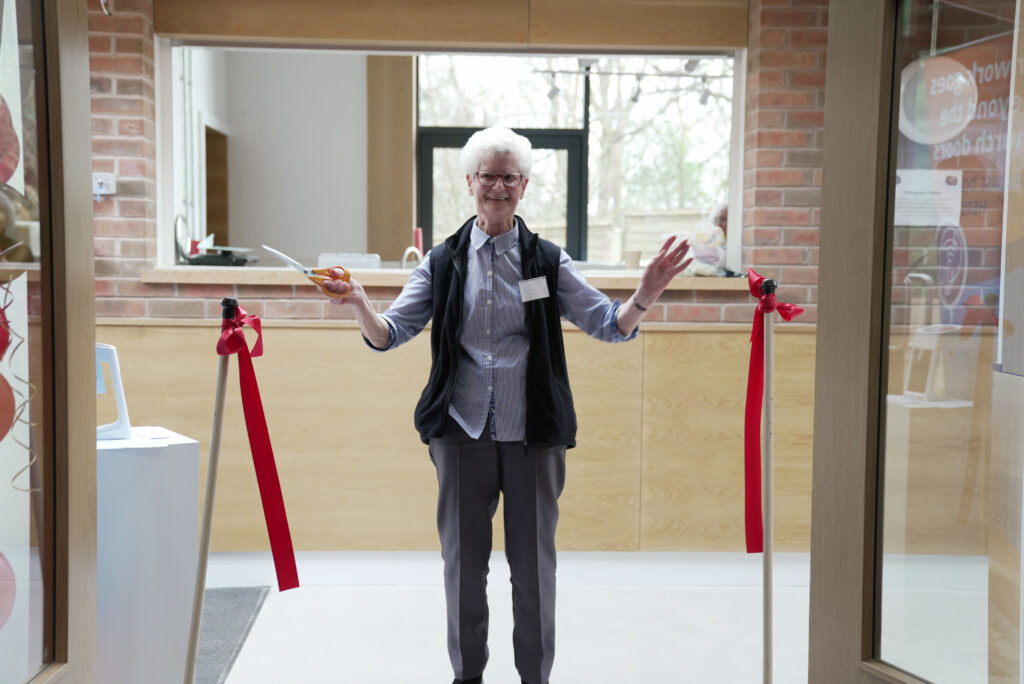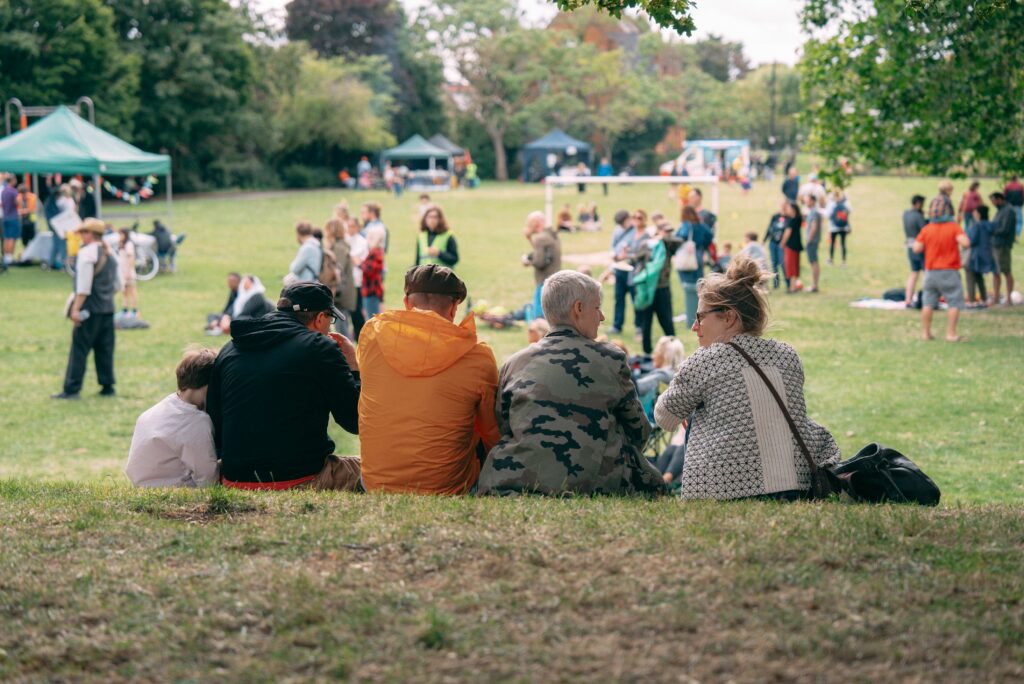Transforming civic life: The Big Local story
To mark the publication of The Big Local Story: A summary of our learning from the Big Local programme, Local Trust’s CEO Matt Leach reflects on the design, delivery and impact of the resident-led programme.
A place for everyone
Last week, I attended the opening of a long-awaited new community facility, the Community Hub at St Bert’s Church in Runcorn. A much-loved local place of worship which has been extended to create a multi-use space for local residents.
The project, which benefits from funding from a wide range of national and local funders, marks the most ambitious achievement to date of Windmill Hill Big Local, the resident-led group set up in 2012 to transform civic life on a deprived estate on the edge of Runcorn in Cheshire.
There is a lot to learn from their success, not least when it comes to tackling challenges facing other ‘left behind’ neighbourhoods around the country.

Dorothy McAllister – longest member of St Bert’s congregation – cutting the ribbon to open Windmill Hill’s new community hub.
Benefiting from the Big Local programme
Windmill Hill was chosen as a recipient of Big Local funds over a decade ago because of significant levels of local deprivation, but also because it had missed out on its fair share of funding in the past.
Low levels of community activity and organisations, and a lack of places to meet, meant that Windmill Hill simply hadn’t been successful in accessing the same amount of support and investment provided to many other, similarly deprived communities. This is a familiar story in many other housing estates, as highlighted in the recent inquiry report by the APPG for ‘left behind’ neighbourhoods.
Like other Big Local areas across the country – there are 150 of them in England – Windmill Hill benefited from what was a radical and innovative initiative by the National Lottery Community Fund.
Rather than the traditional approach of waiting for and responding to applications, each neighbourhood was offered just over £1m of funding, to be spent over the next 10 – 15 years.
There were no unnecessary rules or deadening bureaucracy. Instead, local people were trusted to take the lead in setting priorities and making decisions, with Local Trust set up to provide advice, training, coaching and support to help residents make the most of their opportunity.
The aim wasn’t just to fund projects locally, but to help residents – by putting them in control – to build the skills, confidence and capacity needed to sustain the community into the future.
From challenge to transformation
The programme hasn’t always been easy or straightforward – even Windmill Hill residents would admit to moments of conflict and times when they didn’t think they’d achieve all of their ambitions.
But, overwhelmingly, the experience of Big Local areas has been one of transformation. Sometimes through the acquisition of new community assets, like the Windmill Hill Community Hub, but just as often through a slow and incremental rebuilding of civic confidence, and an active, vibrant and diverse community life.
This is something you also see when you visit the Phoenix Park CHI Community Café, funded by Windmill Hill Big Local in 2019 and still a thriving community resource today.
That’s important, because if Big Local has made a positive difference in many communities in which it has been delivered, we can see from OCSI analysis for Local Trust that the sorts of issues faced by neighbourhoods like Windmill Hill back in 2012 continue to challenge many communities now.
Places with low levels of social infrastructure and high levels of deprivation typically access 60% less funding per head than other equally deprived areas, and suffer from significantly worse social outcomes across key measures of health, crime, education and opportunity.
The need to address the challenges of those areas was acknowledged in the Levelling Up White Paper. It also underpinned the decision of the government last year to accept the case made by the Community Wealth Fund Alliance for some of the next wave of dormant assets to be committed to improving social infrastructure in places with relatively high deprivation and/or low social capital.
The future of community funding
The announcement by Secretaries of State Michael Gove and Lucy Frazer, published in September last year, sets out how the planned new Community Wealth Funds (CWFs) will:
- deliver targeted, local investment to those places experiencing high levels of deprivation and/or low social capital
- empower local people, by giving them a stake in the process and having resident-led decision-making at its core
- provide long-term investment to places, giving them a stable source of funding from which they can develop and learn from over time
- embed capacity-building, with a focus on building social capacity and developing the skills, experience and knowledge needed to ensure improvements are sustainable
- have robust governance and evaluation built-in, ensuring that CWFs have long-term impact with findings that are transparent and learnings that are actioned
- abide by the additionality principle, not replacing or undercutting central or local government money.
These principles very much reflect those that have informed the work of Local Trust and the Big Local programme over the last decade or more.
Sharing learning and insight
To that end, to help support the design of new CWFs, we have today published a new paper, The Big Local Story: A summary of our learning from the Big Local programme.
The summary paper makes four distinct recommendations that are relevant to future decision-making about how best to proceed with establishing the delivery architecture for the new funds:
- As a priority, government should establish a new, dedicated national delivery agency to distribute the funds, with a clear mission and delivery capacity, as opposed to contracting with an existing organisation or using a consortium model.
- There should be clear criteria set for the identification of areas to benefit, drawing on agreed assessments of need.
- Alongside delivery of the fund, flexible infrastructure should be established to support community leadership development and capacity building in areas of benefit.
- The programme should provide relatively small amounts of funding to each area (in comparison to other public funding going into areas), but – crucially – it should be committed over the long term.
On top of this, the total scale of resources committed should be sufficient enough to sustain effective support infrastructure for the duration of the fund, reflecting the changing and significant needs of benefiting areas over the time frame of any long-term developmental programme.
With Local Trust entering the final three years of operation, and as Big Local areas spend their final allocated resources and look forward to the future, we are eager to share learning and insight with those tasked with delivering the new CWFs over the coming decade and beyond. We hope this new report provides a great starting point from which to build.
Read The Big Local Story: A summary of our learning from the Big Local programme now to find out more.
Matt Leach is the CEO of Local Trust.

